Bonhams announces highlights of September Asia Week New York sales
Lot 685. A rare and important embroidered silk icon of Ichiji Kinrin, Kamakura (1185-1333) or Muromachi period (1333–1573), 14th-15th century, the border 15th century. Overall: 105.4 × 40.3cm; image only without borders 82.9 × 35.9cm. Estimate US$500,000 - US$700,000 (€450,000 - €630,000). Photo: Bonhams.
NEW YORK, NY.- Bonhams is now presenting a strong series of sales in celebration of Asia Week New York this September highlighted by a rare and important embroidered silk of the Buddhist deity, Ichiji Kinrin. The sales will include Fine Chinese Ceramics and Works of Art on September 18, Fine Chinese Paintings on September 19, and Fine Japanese and Korean Works of Art on September 20.
On September 18, Fine Chinese Ceramics and Works of Art will present more than 200 works including a selection of fine snuff bottles from two private collections. Of particular note is an 18th century Imperial jade-inset Zitan ‘Da Ji’ double-gourd table screen, estimated at $50,000 – 70,000. The screen was previously held in the collection of the Prince Gong Mansion, Beijing's largest and best-preserved Qing Dynasty (1644-1911) princely mansion.
Lot 24. Property from a Southern Sate Family Collection. An Imperial jade-inset Zitan ‘Da Ji’ double-gourd table screen, Qianlong Period (1736-1795); 70 x 40 x 14cm overall; 62 x 30.8 x 6.7cm wooden panel only. Estimate $50,000 – 70,000 (€47,000 - €66,000). Photo: Bonhams.
The plaque enclosed with a high border of peony scrolls and keyfret pattern, decorated on one side with two gilt bronze medallions inset with jade characters Da and Ji over a 'bat and cloud' ground and with cloisonné enamel floral scrolls at the border, the upper medallion encircled by jade insets of Eight Daoist Symbols and the lower medallion with the Eight Buddhist Emblems, the finely incised keyfret ground detailed in gilt, a pair of gilded repoussé catfish with double ropes mounted at the waist and centered by a jade bi disc, the back plain and finely finished, the top of the gourd-shaped plaque capped with a cloud-form crown centered with a jade shou character below five jade bats and soapstone peaches, the base deeply carved to depict ocean sprays, all supported by a stepped hardwood base.
Provenance: Collection of the Prince Gong Mansion
Yamanaka & Company
American Art Galleries, New York, 1913
Collection of Mrs. Henry Walters
Parke-Bernet Galleries, Inc., New York, 1941 and 1942
Collection of Milton Drexel Rutherford, by descent to the present owner.
Published: Illustrated Catalogue of the Remarkable Collection of the Imperial Prince Kung of China: A Wonderful Treasury of Celestial Art, American Art Galleries, New York, 27 February - 1 March, 1913, lot 195 (not illustrated)
Art Collection of Mrs. Henry Walters, Volume One, Parke-Bernet Galleries, Inc., New York, 23-26 April 1941, p. 71, lot 320 (not illustrated)
Art of China, Parke-Bernet Galleries, Inc., New York, 8-9 May 1942, p. 69, lot 415 (not illustrated).
Note: Bonhams is honored to present this extremely rare and important 'Da Ji' double-gourd table screen from the storied Prince Gong Mansion. This extraordinary object was a witness to the extreme wealth, decay, and downfall of the Qing Imperial Court. The turbulence of the transition from the Qing to the Republic period had forced the Prince's family to sell all content of the mansion, except for their collection of painting and calligraphy, to the famed Japanese art dealer Yamanaka Sadajiro (1866-1936) who operated art galleries around the globe. A historic auction of 536 objects, Illustrated Catalogue of the Remarkable Collection of the Imperial Prince Kung of China: A Wonderful Treasury of Celestial Art, was held in 1913 at American Art Galleries in New York, where the present example was sold.
The Mansion's land and buildings existed as early as 1776, but the estate came to light in 1780, when Emperor Qianlong (r. 1735-1796) promised the marriage of his beloved youngest daughter, Princess Hexiao (1775-1823), to Fengseninde (1775-1810), the son of his most favored minister, Heshen (1750-1799). Upon the engagement, Emperor Qianlong ordered Heshen to lead the construction of the Princess' residence for her future home. Heshen, as the Princess' father-in-law, was given the privilege of living on the Princess' estate while building a lavish mansion and garden far beyond his appropriate rank in court.
Heshen rose to prominence from humble origins. Son of a Manchu military officer, Heshen lost his mother at a young age. He began working at the Forbidden City as a guard stationed at the gates, was quickly promoted through the ranks and eventually holding the highest positions in Qianlong's court, handling affairs of finance, policy, and Imperial Household matters. Heshen created revenues through taxation and policy changes, effectively filled the Emperor's personal and state treasury in the way his predecessors failed to achieve. The treasury funds the governing necessities such as military expenses and disaster relief, as well as the maintenance and construction of the imperial mausoleums. It also funded Qianlong's ambitious project of compiling the encyclopedic Siku Quanshu, which took twenty years to complete and publish. Heshen was loved by Emperor Qianlong for his talent and effectiveness, but hated by Emperor Jiaqing (r. 1796-1820) for his corruption and arrogant behavior. Within a few months of Qianlong's passing, Emperor Jiaqing indicted Heshen with twenty major crimes, demoted his family, confiscated the mansion, and 'mercifully' bestowed a long white damask allowing him to hang himself in prison instead of being decapitated. Princess Hexiao and her husband Fengseninde were ordered to leave the mansion but were well-provided through the end of their lives.
Emperor Jiaqing awarded the mansion to Prince Qing, Yonglin (1766-1820), the youngest brother of the Emperor, and the mansion was called the Prince Qing Mansion for several generations until 1850 when Emperor Daoguang (r. 1820-1850) stated in his will to leave the mansion to Prince Gong, Yixin (1833-1898). During Yixin's time, the Mansion again witnessed the rise and fall of its owners. (fig. 2)
Fig 2: Prince Gong, Yixin (1833-1898)
granted the honor of "Tiemaozi wang" ("Iron-Cap Prince") which allows perpetual inheritance of his title and rank within his descendants.
Yixin lived in the Prince Gong Mansion through the end of his life, and the Prince Gong title was passed down to his grandson, Puwei (1880-1936). (fig. 1) The abdication of the Qing Emperor, Puyi (1906-1967), in 1912, ended the system governing the imperial properties. Seeking funds to survive and the resources to restore Puyi's regime, the Prince's family not only sold the movable treasures, but further mortgaged the mansion and related estates with the Catholic church. The mansion was eventually purchased by Fu Jen Catholic University in 1937, when the family was no longer able to keep up with the interest payment. Today, the Prince Gong Mansion is the most complete Prince Mansion in Beijing, open to the public and a must-see location for visitors from around the world.
Fig 1: Prince Gong, Puwei (1880-1936)
The imagery of a double-gourd bearing the 'Da Ji' characters appeared in great numbers and across media in the Qianlong period. It conveys good wishes for wealth (hulu, in homonymic with fulu) and great fortune (da ji). In Daoist belief, the gourd also implies a container of medicine or elixir for long life. An openwork gold fumigator in the shape of a double gourd adorned with 'Da Ji' characters, in the collection of the Beijing Palace Museum, is illustrated by Ho and Bronson, Splendors of China's Forbidden City: The Glorious Reign of Emperor Qianlong, London and New York, 2004, p. 176, no. 217 and noted by the authors: "Non-perishable provisions – furnishings, clothes, jewelry – were given to but not owned by Palace women. ... In a 1741 statement Qianlong made it known that imperial wives of past and current emperors were not allowed to give away their personal belongings, stating that everything they had belonged to the Imperial Household Department."
The present example may be a gift or dowry of that nature. It is very rare to see a 'Da Ji' double-gourd panel adorned with twin carps. The prominent 'cloud' crest and 'wave' base closely resembles design motif of imperial robes, suggesting a close association with the Imperial Court. The imperial connection can be further strengthened by two unfinished double-gourd jade panels with zitan frames, surmounted with 'cloud' crest and double-carp handles, with dedicated space for the five bats and the 'Da Ji' characters, in the collection of the Beijing Palace Museum, illustrated on the museum's website, accession numbers 故00209312 and 故00209313.
Compare the 'Da Ji' plaque very similarly decorated with the auspicious emblems, twin carps, and a crest of clouds adorned with a shou character and five bats, sold in our London sale rooms on 16 May 2013, lot 391, from the collection of Luis Valera y Delavat (1870-1926), Marquis de Villasinda, Spanish diplomat in Beijing, circa 1900, and thence by descent. According to the family, the plaque was acquired at that time and originated in the Forbidden City. (fig. 3)
Fig 3: A Rare Imperial Double-Gourd Gilt-Bronze Zitan and Hardwood 'Da Ji' Plaque, Bonhams London, 16 May 2013, lot 391.
The present 'Da Ji' double-gourd table screen represents the sumptuous taste of the Imperial Court at its height of prosperity. The work is charged with layers of symbolism and auspicious wishes. The five bats adorning the cloud-shaped crest stand for the five wishes (longevity, wealth, health, love of virtue and a peaceful death). The peaches and the shou character are also motifs of long life. The wish for longevity is further reinforced by the double-gourd form, enclosing the Eight Buddhist Emblems, bajixiang, and the attributes of the Eight Daoist Immortals, anbaxian, surrounding the characters Da and Ji, meaning Great Fortune. The very rare gilt bronze double-catfish handles stand for another blessing: may you have plenty year after year (nian nian you yu). Such a highly auspicious plaque was probably made in celebration of an Imperial birthday.
Additional highlights:
Lot 61. A rare and important Longquan celadon charger with barbed rim, late 14th-early 15th century, 47.2cm diam. Estimate $60,000 – 90,000 (€55,000 - €82,000). Photo: Bonhams.
Superbly potted and carved in the center with a loquat pipa tree bearing clusters of fruit and broad, slender leaves under twelve barbed and lobed petal brackets, each panel further divided into two leaves, each containing discrete branches of flowers and fruits of the four seasons featuring narcissus, tree peony, loquat, camelia, pomegranate, lotus, chrysanthemum and daylily, with further individual floral sprays adorning the foliate rim, the underside sections carved with twelve distinct floral sprays, covered overall with a brilliant, translucent sea-green celadon glaze save the narrow concentric kiln spur ring with traces of burnt orange on its edges.
Provenance: Anna Rice Cooke (1853-1934), purchased on tour of Asia, 1921
Alice Cooke Spalding (1888-1968)
Phyllis H. Spalding (1920-2006)
By descent to the current owner.
Note: This splendid longquan celadon dish is exceedingly rare in its imposing size, form, and central carved decoration of a loquat plant. While longquan ware was known for its mass production and export, the present example belongs to an elite line commissioned by the imperial court.
The form and decoration of this longquan dish closely mirrors the imperial blue and white porcelains from Jingdezhen made in the Hongwu (r. 1368-1398) to early Xuande (r. 1425-1435) periods. Recent excavations of the longquan Dayao Fengdongyan kiln site unearthed shards of large dishes, vases, and bowls very similar to their Jingdezhen counterparts. The precision of potting, even-tone glaze color, and execution of the carved designs are of the finest quality – any pieces not up to the standard were smashed and buried as kiln waste, a practice well-established at the Jingdezhen kilns for the imperial porcelains. Compare, for example, a large fragmented dish of the bracket-lobed form very similar to the present example, with closely related carved decorations and a lychee plant at the center, illustrated in The Flower of Jade Green – Longquan Celadon of the Ming Dynasty: Recent Archaeological Findings of the Dayao Fengdongyan Kiln Site, The Museum of Oriental Ceramics, Osaka, 2011, p. 69, no. 30, identified as Yongle period official ware; and a blue and white dish without barbed rim decorated with a lychee plant at the center, illustrated in Yuan's and Ming's Imperial Porcelains Unearthed from Jingdezhen, Beijing, 1999, p. 124, no. 67.
The depiction of fruiting trees gained popularity during the Yongle period. Lychee, peach, melon, and grapes are common motifs for both longquan and Jingdezhen wares. For longquan chargers of this type, only two other examples with loquat plant have been recorded: one sold at Christie's Hong Kong, 30 November 2011, the other in the collection of the Beijing Palace Museum, illustrated on the cover by Dong, Gugong bowuyuan cang Longquan yao qingci yanjiu (Research on the Longquan Celadon in the Palace Museum Collection), Beijing, 2020.
Produced under the supervision of the Ming court, vessels of this large size and exceptional quality were made as gifts to cement trade relations or rewards for exemplary service. They were particularly well-suited to the dining customs of the Ottoman Court. See Krahl, Chinese Ceramics in the Topkapi Saray Museum, Istanbul: A Complete Catalogue, London, 1986, vol. 1, nos. 233-9; and a Longquan large dish decorated with lychee, illustrated by Fujioka and Hasabe, Ceramic Art of the World, volume 14: Ming dynasty, Tokyo, 1987, no. 131.
The Chinese name pipa for loquat fruit was taken from the tear-drop shape of the pipa lute. Golden in color when ripe, the fruit also symbolizes wealth and a harmonious family life. The loquat tree blooms in the winter, bearing fruit through the spring, and the plump, golden fruit ripens in early summer – in Chinese culture the loquat tree symbolizes prosperity in four seasons.
Lot 69. An iron-red and gild-decorated two-handled tripod censer, Jiaqing six-character mark in iron-red and of the period (1796-18/20); 36.7cm high of censer; 52cm high with cover and stand (wood cover and stand). Estimate $40,000 – 60,000 (€36,000 - €53,000). Photo: Bonhams.
Finely painted on the globular body with bajixiang, the Eight Buddhist Symbols, the ground densely filled with stylized peony scrolls, a pair of S-curve handles rising from the shoulders by a band of ruyi heads, the sides and rims decorated with keyfret patterns, all supported by hollow bulbous feet, the underside decorated with a single flower encircled by brackets and florets; the wood cover and stand finely carved and inserted with jades carvings.
Provenance: Private Florida Collection.
Note: Another identically sized and proportioned censer, also decorated in iron-red but with two opposing dragons rather than the bajixiang of our example and bearing a Jiaqing six-character seal mark at the rim, was sold at Christie's Hong Kong, 30 May 2023, lot 3079. Clearly these two vessels were a product of the same Imperial workshop and presumably made at the same time to fill an Imperial order. The construction of each, the placement of the firing holes, and the potting appears identical, and the iron-red painted decoration is of the highest order, with superbly detailed passages throughout, with highlights picked out in a rich gilding. Our example is white glazed to the interior unlike the turquoise glaze to the referenced example.
A few other examples of this type of iron-red decorated censer have appeared at auction over the years, see Sotheby's Hong Kong, 31 October 1995, lot 481 and at Christie's London, 14 May 2019, lot 315.
This incense burner is likely to have been part of a five-piece altar garniture set, known as the 'Five Offerings' (wugong 五供), which were widely used in Buddhist rituals to seek protection from the deities. In shape and decoration, the vessels included in these sets, which also comprised a pair of candlesticks and wine containers, recall those employed to perform ancestral sacrifices during the Shang and Zhou periods. Restoring the ancient Chinese ways through the reinterpretation of archaic forms was viewed by the Qing rulers as one way to reinstate the importance of performing filial acts, the core value of Confucian thought that legitimised the emperors' right to rule.
Lot 120. Property from the Collection of Eugene Y.C. Sung in trust. A rare and fine dated and inscribed ‘lobed-columnar’ square grey jade seal, Inscribed Daoguang twenty-first year, xinchou, corresponding to 1841; 19cm high. Estimate $40,000 – 60,000 (€36,000 - €53,000). Photo: Bonhams.
Carved from one piece of flawless, pale celadon jade, the square base surmounted by a tall column with indented corners under a galleried platform supporting a crouching dragon, finely carved with mouth agape and teeth clenched, the head dramatically resting on its sinewy body which forms the finial crest, the shaft inscribed 河清鄉 (Heqing county), 上帝廟 (God's temple), the base inscribed on two vertical faces 道光二十一年辛丑 (Daoguang 21st year, xinchou, corresponding to 1841) and 沐恩黎一經堂敬酬 (Repay respectably by Mu'en Li at Yijing tang), the four-character seal inscribed in jiu die script 上帝之寳 (God's precious treasure), the inscriptions with traces of carmine pigment.
Provenance: ugene Y.C. Sung Collection, Ohio and New York.
Note: This seal is of the absolute finest craftsmanship and utilizes a single piece of nephrite from which to carve the entire seal. This fact alone displays the importance of the object to the donor. The amount of wastage in such an evenly toned brilliant material would have been high, and costly. The 'column' or 'pillar' form is very rare amongst jade seals and no other example appears to have been published. This form of seal, cast in bronze, however, can be traced back to at least the Warring States period and on through the Ming and Qing dynasties, for examples see Ancient Seals, The Complete Collection of Treasures at the Palace Museum, Hong Kong, 2008, p. 7, no. 11 (Warring States seal); p. 166, no. 343 (Jin seal); p. 168, no. 345 (Yuan seal) p. 183, no. 369 (Ming seal); and p. 228, no. 415 (Qing seal). The likelihood, however, is that this seal is more closely based on an architectural form. The tall column with indented corners under a galleried platform supporting a crouching dragon, probably represents an architectural feature such as a gateway pillar or column. Many large building complexes across China feature such pillars for gateways. For example, see the gateway to the famous Temple and Cemetery (and family mansion) of Confucius that is located at Qufu in Shandong Province and illustrated on the UNESCO World Heritage Convention website (whc.unesco.org/en/list/704/). Four large pillars supporting a capital upon which sits a dragon grace the entrance.
The seal has inscriptions on various planes. The central pillar is inscribed 'Heqing county' and 'God's temple'. The name of the county is unfortunately a common one and we cannot place this in a particular province. 'God's temple', is a little harder to classify. We presume this refers to a Christian church, though we cannot be entirely sure, as the inscriber used the word 'temple' (廟 miao) instead of 'church' (教堂 or 教會 jiaotang or jiaohui). This is certainly open to interpretation.
One side of the short square base of the seal reads, 'Repay respectably by Mu'en Li at Yijing tang'. The seal it seems was commissioned by Mu'en Li at a school or gathering place named the Yijing Tang. It is possible that Mu'en Li was a missionary but we cannot be certain. Another side of the short base is inscribed Daoguang twenty-first year, xinchou, corresponding to 1841.
The four-character seal that covers the entire base is inscribed in jiu die seal script 上帝之寳 (God's precious treasure) further suggesting the Christian connection.
Lot 81. Property from the Collection of Vahid Kooros. A kesi mandala fragment with Imperial portraits, Yuan Dynasty, second quarter of the 14th century; 98 x 67.5cm, 114.3 x 80cm with frame. Estimate $40,000 – 60,000 (€36,000 - €53,000). Photo: Bonhams.
Originally the lower-right hand corner of a mandala, the fragment shows from the outer edge: the hats and faces of two Yuan dynasty empresses, the Yidam Hevajra and his Prajnya in a cartouche with lotus throne and surrounded by a flame border, a smaller cartouche of the same border with the Buddhist protector Acala raising a sword over his head, the concentric bands of a fire circle, a vajra circle, a circle containing sections of the eight graveyards, a circle of lotus petals, a makara on the upper-left corner partially spouting water from its mouth, and the vase Amrita Kalasha containing the Elixir of Life, with three lotus flowers representing long life; the dark blue ground filled with classic scrolling foliage and floral roundels, the right-hand side attached to an orange brocade border.
Provenance: Spink, London, 1 March 1999.
Published: Threads of Imagination: Central Asian and Chinese Silks from the 12th to the 19th century, Spink, London, 1999, cat. no. 8
Exhibited: Beyond the Great Wall: Cultural Features of China's Cowboy Neighbors, Museum of Fine Arts, Houston, 22 November 2003 - 29 February 2004.
Note: This mandala fragment belongs to the same set as the Vajrabhairava mandala in The Metropolitan Museum of Art, also known as Yamantaka Mandala with Imperial Portraits, acc. no. 1992.54 (fig. 1). Even in a fragmentary state, the present example conveys an immense artistic and historical presence and importance; it may be the only recorded example from the same imperial commission in private hands.
Fig. 1. Vajrabhairava mandala, Yuan dynasty, ca. 1330-32, The Metropolitan Museum of Art, 1992.54, Purchase, Lila Acheson Wallace Gift, 1992.
As James C. Y. Watt and Anne E. Wardwell state in the exhibition catalog When Silk Was Gold: Central Asian and Chinese Textiles, New York, 1997, pp. 95-98, cat. no. 25, the imperial order of the Metropolitan Museum's Vajrabhairava mandala was not recorded in Jingshi dadian (經世大典, Record of Yuan Institutions). However, they successfully argue, by reconciling important dates in the lives of the imperial subjects featured in the mandala with a compelling stylistic analysis of the imperial portraits along the bottom edge, the worship of Vajrabhairava as the central deity, and the size of the mandala, that the Metropolitan Museum's mandala was an imperial commission dating from 1330 to 1332. The present example from the Kooros Collection compares closely to the Metropolitan Museum's mandala for its superb workmanship in the kesi technique, the scale, the compositional structure, and the representational style of the empresses' portraits and other ritual features.
The two Yuan dynasty empresses depicted on the lower corner are Budashiri (ca. 1307 - ca. 1340, who acted as regent 1332-1339) and Babusha (d. 1330), the respective spouses of Tugh Temür (1304-1332, Khubilai Khan's great-grandson who reigned 1328-1329 and 1329-1332 as Emperor Wenzong) and Khoshila (1300-1329, elder brother of Tugh Temür who reigned briefly in 1329 as Emperor Mingzong). A Tibetan inscription in a cartouche above Babusha's head remains, while the cartouche above Budashiri has been cut away. Vertical strips originally extended from the cartouches that may have included the empresses' Chinese names now have been removed and replaced with kesi weavings to match the surroundings. Compare, for example, detail views of the Metropolitan Museum's mandala which show the same composition and removal of Chinese names (figs. 2, 3, 4).
Fig. 2. Detail of Vajrabhairava mandala, The Metropolitan Museum of Art, 1992.54
Fig. 3 (detail of the present lot)
Fig. 4 Portrait of Empress Babusha, Taipei Palace Museum
Watt and Wardwell further summarized that "It is likely that this kesi was commissioned before the death of Babusha, in 1330, and completed after the death of Tugh Temür, in 1332. The subject of the mandala suggests that it may have been produced for an initiation ceremony. We know from his biography in the Yuanshi that Tugh Temür underwent two initiations as emperor and that Yamantaka initiations were practiced by the Yuan imperial family. However, because the paintings and kesi of imperial portraits and mandalas were always produced in triplicate or (more rarely) in duplicate, and because no mention of the occasion is ever given in connection with the orders, it is most probable that these portraits and mandalas were meant to be housed or displayed in the imperial ancestral halls and portrait halls (yingtang) for emperors and their consorts that were in temples connected with the imperial family. More than one copy of this kesi was made, and there is indeed a small fragment of the same mandala that is known to have survived" (ibid., p. 98). The present fragment from the Kooros Collection may be the one that is referenced by Watt and Wardwell as an iteration of the mandala in the Metropolitan Museum's collection.
From September 15 – 25, the department will present nearly 100 additional works including snuff bottles, furniture, and decorative arts in Chinese Works of Art Online.
Fine Chinese Paintings on September 19 will feature a full spectrum of Chinese paintings including examples in the classical tradition once a part of the Qing Imperial Collection along with the most desired 20th century masters such as Zhang Daqian, Qi Baishi, and Pu Ru, as well as Contemporary ink. A highlight of the sale is an album of twelve fan paintings by Yun Shouping (1633-1690), estimated at $300,000 – 500,000. A Chinese calligrapher and painter, Yun Shouping is regarded as one of the "Six Masters" of the Qing period and these paintings, dated variously from 1665-1686, span his most important years of creative output.
Lot 321. Yun Shouping (1633-1690), Landscapes and Flowers, 1665-1686. Twelve fans mounted as an album, ink and color on gold paper, each leaf inscribed by the artist, leaf four, six, seven, nine and twelve dated 1671, 1670, 1669, 1686 and 1665 respectively, signed Shu shi Shouping, Yun Shouping, Dongyuan Shouping, Nantian Shouping, Shouping and Piling Yun Shouping, each fan with one or two artist's seals, including Zhengshu, Shouping and Yun Ge in intaglio and relief, ran han in relief and Yun Zhengshu in intaglio, with eleven imperial seals of Qing emperors reading Shiqu Baoji, Shiqu ding jian, Baoji chongbian, Qianlong yulan zhi bao, Jiaqing yulan zhi bao, Leshoutang jiancang bao, Ningshougong xu ru Shiqu Baoji, Xuantong yulan zhi bao, Qianlong jianshang, Sanxitang jingjian xi and yi zisun; 18.4 x 49.5cm) each (12). Estimate $300,000 – 500,000 (€270,000 - €450,000). Photo: Bonhams.
Provenance: The Qing Imperial Collection
The collection of Pu Yi (1906-1967), 1921
Sungari International Auction, Beijing, 18 August 2007, lot 244.
Published: Wang, Jie (1725-1805) et al. eds. Qingding Shiqu Baoji Xubian (Imperially Commissioned Sequel to the Precious Collection of the Stone Moat Pavilion), 1791-1821 (late Qianlong to Jiaqing period), Vol. 58 Collection of Ningshou Gong (Palace of Tranquil Longevity) No. 15; reprinted in National Palace Museum ed. Midian Zhulin Shiqu Baoji Xubian: Shiqu Baoji Wu. Taipei: National Palace Museum, 1971, pp. 2886-2887.
Xu, Bangda, ed. "Fulu: Pu Yi Shang Pu Jie Shuhua Mu (Appendix: Inventory of Calligraphies and Paintings Bestowed to Pu Jie by Pu Yi)." In Wenwu Cankao Ziliao (Cultural Relics Reference Materials), 1950 (12), pp. 86-153.
Chen, J.D. ed. Gugong Yi Yi Shuhua Mu Jiaozhu (Annotated Inventory of Calligraphies and Paintings Lost from the Qing Palace). Hong Kong: Tung-Ying Company, 1956, p. 27.
Note: Yun Shouping was the third son of the promising scholar Yun Richu (1601-1678), born in the capital during the final years of the Ming Dynasty. After Beijing's fall to the Manchu armies in 1644, Yun Shouping fled with his father and two brothers from their wartime refuge in the Tiantai Mountains to Fujian in a desperate attempt to restore the Ming. However, by 1648 his one brother was killed, the other was missing, and Yun Shouping was captured and imprisoned as a Ming loyalist. Although only 15 years old, he was artistically gifted and his ability to paint caught the eye of the wife of the Manchu general Chen Jin (d.1652), who lacking a son, would adopt the young prisoner as their own. After Chen Jin's death, Yun Shouping would reunite with his birth father, and soon thereafter he began his career as a professional painter.
Yun Shouping and fellow artist Wang Hui (1632-1717) were lifelong friends, and for perpetuity they are linked as two of the Six Orthodox Masters of the Early Qing. Numerous collaborative works by the two artists testify to their close relationship, and although an anecdote recounts that Yun Shouping deferred to Wang Hui and eschewed landscape painting in favor of floral compositions, Yun Shouping painted landscapes throughout his career. In this album, eight of the twelve fans are landscape scenes, and they demonstrate his approach and reliance on old masters such as Huang Gongwang (1269-1354), Ma Hezhi (Active 1130-1170) and Dong Yuan (Active 930's -960's) for stylistic inspiration.
The twelve leaves that form this album were not created at the same time, as those dated by the artist span more than twenty years. It is likely the individual leaves were brought together under the auspices of the Qing Imperial Collection in the century that followed the artist's death in 1690. Although dated variously, the group of fans are unified by the aesthetics of the shared medium of gold treated paper. Utilized infrequently by Yun Shouping, fan paintings and calligraphy on gold paper were prevalent during the Ming period, to the extent that Ming fans were referred to as "Ming Jin" (明金).
Additional highlights:
Lot 311. Property from an important private collection. Qi Baishi (1864-1957), Autumnal Landscape for Lao She. Hanging scroll, ink and color on paper, inscribed by the artist with a dedication to the writer Lao She (Shu Qingchun, 1899-1966), and signed Baishi Qi Huang, with two artist's seals reading mu ren and Qi da and four collector's seals, two from Qian Jingtang (1907-1983) and the other two from Yu Fengsheng; 100 x 34cm. Estimate $120,000 – 180,000 (€110,000 - €160,000). Photo Bonhams.
Provenance: The collection of Lao She and Hu Jieqing (1905-2001)
The collection of Qian Jingtang
The collection of Yu Fengsheng
Hanhai Auction, Beijing, 20 November 2004, lot 668.
Note: The recipient of the present lot, Lao She, occupies a prominent place in the annals of 20th-century Chinese literature as a renowned novelist. His sphere of influence extends beyond his literary achievements to encompass his role as a collector of significant Chinese painting and calligraphy spanning across works by Qing dynasty artists and Lao She's contemporaries. A portion of Lao She and his wife Hu Jieqing's collection found a new home at the National Art Museum of China in 2015, and 16 selective works from the collection, half of which were paintings by Qi Baishi, were auctioned at China Guardian Beijing on 10 May 2013.
Lao She's approach to collecting emphasized on contemporary paintings that were more accessible to his means, as echoed in his writing: "I am drawn to works by my contemporaries for their vibrant hues, which soothe my soul and delight my senses. Furthermore, the need for secure storage does not weigh on my mind." Among the artists of his era, Qi Baishi stood out as the master Lao She held in the highest regard. Lao She acquired his first Qi Baishi painting in 1933, facilitated by their mutual friend, the writer Xu Dishan (1894-1941).
In 1940s, the seeds of a profound connection between Lao She and Qi Baishi began to sprout when Hu Jieqing undertook the task of tutoring the artist's sons for their university entrance exams in Beijing. In 1950s, Hu Jieqing became Qi Baishi's student and acquired a number of paintings dedicated to her from the master. The relationship between Lao She and Qi Baishi culminated in this period, as attested by the inception of two sets of four hanging scrolls commissioned by Lao She in 1951, currently in the collection of the National Art Museum of China. In a unique artistic partnership, Lao She selected eight poetry lines and provided conceptual ideas, which were then masterfully brought to life by the deft strokes of Qi Baishi's brush.
The inscription on the present lot reveals that Lao She once visited the artist's studio and expressed his admiration for this specific painting upon setting eyes on it. In a heartfelt gesture, the artwork was subsequently bestowed upon Lao She as a cherished gift. This more likely happened during the late 1940s-1950s when their friendship blossomed into a close bond. Following the 1940s, Qi Baishi shifted his focus towards subjects that were better received, particularly the flower-and-bird, animals, and quotidian objects, as opposed to landscapes. However, he would occasionally return to landscape painting, and there are indeed landscapes dated even the 1950s documented in reliable publications.
A close comparable to the subject painting is Autumn Landscape with Cormorants published in Jung Ying Tsao, The Paintings of Xugu and Qi Baishi, pl. 25, pp. 330-334. (Fig. 1) Apart from the similar motifs such as a flock of cormorants and groves of autumnal trees, the placement of inscription aligns between the two works. Both paintings lack a date and are impressed with the Qi da seal. The inscription of the painting in Tsao's catalog unveils the reason behind the artist's shift in focus:"Old man Baishi is not only adept at painting fish, shrimps, chicks and crabs. I paint these subjects based on the requests of clients." In light of this, it is plausible that this painting was executed after the artist's domestic market had matured, likely post the 1940s. If this assumption holds true, akin to the landscape depicted in Tsao's catalog, the present lot could indeed represent a rare example of a landscape created during the artist's later years.
Qi Baishi (1864-1957), Autumn Landscape with Cormorants, circa 1930. Hanging scroll, ink and color on paper. Collection of Tsao Family.
As evidenced by the collector's seals on the present lot, the painting found its way into the collections of Qian Jingtang and Yu Fengsheng later on. For more on Qian Jingtang, see the footnote of lot 300. Yu Fengsheng, a student of Li Kuchan (1899-1983), was a collector of modern Chinese painting. Part of his collection "Chenggui Tang" was auctioned at Poly, Beijing, on 2 June 2013.
References: Qi, Baishi and Cixi Zhang (transcriber). Baishi Laoren Zishu (An Oral Autobiography of the Old Man Baishi). Beijing: SDX Joint Publishing Company, 2010.
Shu, Yi ed. Lao She Cang Qi Baishi Hua (Qi Baishi Paintings in the Collection of Lao She). Beijing: Beijing Publishing House, 2015.
The Lao She & Hu Jieqing Collection. Beijing: China Guardian, 2013.
Tsao, Jung Ying. The Paintings of Xugu and Qi Baishi. San Francisco: Far Eastern Fine Arts, Inc., 1993.
Lot 316. Property from an important private collection. Zhang Daqian (1899-1983), Landscape, 1940. Horizontal handscroll, ink and color on paper, inscribed by the artist and signed Daqian Jushi Yuan, dated gengchen year (1940), with four artist's seals reading Daqian hao meng, Zhang Daqian, Xishu Zhang Yuan and Daqian wei yin danian; the titleslip, frontispiece and the first colophon written by Wu Ping (1920-2019), followed by colophons by Wang Beiyue (1926-2006) and Zhou Cheng (1941-2022), all executed in 2003. Frontispiece: 14.3 x 63cm;
Painting: 14.3 x 316.5cm; Colophons:14.3 x 103cm. Estimate $200,000 – 300,000 (€180,000 - €270,000). Photo Bonhams
Provenance: Sungari International Auction, Beijing, 22 April 2006, lot 744.
Exhibited: Special Memorial Exhibition for the Twentieth Anniversary of Chang Dai-Chien's Passing, Chan Liu Art Museum, Taoyuan City, 22 August-30 September 2003.
Note: The height of the handscroll has seemingly been tailored to fit snugly within one's grasp. As its length unfolds, it unravels a mesmerizing journey through resplendent mountainscapes. The artist's inscription reveals the inspiration of the painting, descriptions of Mount Emei written by Cao Nengshi (Cao Xuequan, 1574-1646),1 a dignified late-Ming official, scholar and bibliophile who committed suicide after the collapse of the Southern Ming dynasty (1645-1646).
The portrayal of the majestic mountain visages is enriched with the masterful interplay of zhongfeng (centered-tip) strokes and washes of pale colors. The audacious composition and moist atmosphere within the handscroll's expanse evoke parallels not dissimilar to the awe-inspiring masterpiece Sou Jin Qifeng Da Caogao by Shitao (1642-1707), in the collection of the Palace Museum, Beijing, a predecessor Zhang Daqian studied rigorously in his formative years. The present lot was executed in February 1940, a vibrant encapsulation of the artist's initial trip to Mount Emei in June 1939 with Huang Junbi (1898-1991) and the artist's son Zhang Xinzhi (b. 1927). Mount Emei, a monumental mountain in the artist's native Sichuan, became an enduring subject that he reverently revisited in his later works.
Following the enthralling landscape are three colophons written in 2003, the year when the handscroll was displayed in Zhang Daqian's memorial exhibition at the recently inaugurated Chan Liu Art Museum in Taoyuan. The museum is associated with Chan Liu Gallery established in 1973 by Taiwanese artist Huang Ou Po (1917-2003). Zhang Daqian inscribed a signage of the gallery to commemorate its reopening after a renovation in 1979.2 The memorial exhibition in 2003 contained over 70 paintings by Zhang Daqian, including the iconic Xi Qiao Wanse, dated 1970, which was presented in the 2016 G20 Hangzhou summit and was sold at Holly's Guangzhou on 4 June 2023, lot 948.
The first colophon, conveying that the handscroll was executed prior to Zhang Daqian embarking on his expedition to Dunhuang, was penned by Wu Ping (b. 1920), who also inscribed the title slip and the frontispiece. Hailing from Yuyao, Zhejiang Province, Wu Ping held the position of Director of Painting and Calligraphy at the National Palace Museum in Taipei during 1983-1991. Under his stewardship, the museum became the recipient of a momentous bequest according to the artist's will, which contained Zhang Daqian's paintings, calligraphy pieces, seals, and even the artist's residence Moye Jingshe (Abode of Illusions). The soapstone seal Daqian wei yin danian impressed at the lower left corner of the present lot, was crafted by the artist himself and was included in the 1983 donation (accession no. zeng yu 000372N000000000). Wu Ping's father Wu Kegang was a disciple of Li Shutong (1880-1942). Wu Ping himself pursued his artistic path under the tutelage of Deng Sanmu (1898-1963) and emerged as a versatile artist skilled in seal carving, calligraphy and painting.
The second colophon delves into the artist's assimilation of the styles of "Huangshan Huapai" (The Mount Huang School of Painting), Shitao and Bada Shanren (1626-1705). The calligrapher Wang Beiyue (1926-2006) was born in Wen'an, Hebei Province and graduated from Peking University. He worked for the National Palace Museum, taught art in universities and garnered fame for his skillful mastery of seal carving and calligraphy. The third colophon, resounding with admiration for the impeccable composition of the handscroll, was composed by Zhou Cheng (b. 1941), a Taiwanese artist who studied with Jiang Zhaoshen (Chao-shen Chiang, 1925-1996) and Wang Zhuangwei (Wang Chuang-Wei, 1909-1998). He served as a connoisseurship consultant for the National Palace Museum and National Museum of History in Taipei and held his retrospective exhibition at the National Dr. Sun Yat-Sen Memorial Hall in Taipei in 2020.
1 The text is quoted from "Shu Zhong Mingsheng Ji Juan Shiyi" (Records on Famous Sites in Sichuan Vol. 11) in Cao Xuequan, Shu Zhong Guang Ji (Extensive Records of the Central Sichuan). Erudition database, p. 505-506.
2 See the signage in Huang, Chen-chih et al. eds., Past with the Future: Memoir Album for Chan Liu's 40th Anniversary (Taipei and Taoyuan: Chan Liu Art Museum/Gallery), 2013, p. 450.
Lot 313. Property from an important private collection. Pu Ru (1896-1963), Green Mountains Distant Shores, 1958. Horizontal hanging scroll, ink and color on paper, inscribed by the artist and signed Xinyu, dated wuxu, with two artist's seals reading mingyi and Pu Ru; 115 x 231.5cm. Estimate $250,000 – 400,000 (€230,000 - €360,000). Photo: Bonhams.
Provenance: Nam Pak Hong, Hong Kong, 1958
Christie's, Hong Kong, 29 October 2001, lot 172
Sungari International Auction, Beijing, 31 July 2005, lot 1442.
Note: The origin of this painting dates back to its creation as a commissioned piece for the inauguration of a hang selling ginseng and traditional Chinese medicine located in the "Nam Pak Hong" area (Bonhams Strand and Wing Lok Street) within Hong Kong's Sheung Wan district. Several months later after its completion, Pu Ru held an exhibition in Hong Kong and encountered his fellow painter Sun Xingge (1897-1996). During their conversation, Pu Ru conveyed that he rarely executes large-scale paintings and had been pondering about the whereabouts of this particular piece, which he considered as one of his most cherished works. This led Sun Xingge to venture to Sheung Wan and found the painting displayed in a hang on Wing Lok Street. In 1992, due to the owner's departure from Hong Kong, this masterpiece was relocated overseas.
Sun Xingge was a painter hailing from Jieyang, Guangdong Province. He was steeped in a penchant for art nurtured by his father Sun Shumei, an expert of medicine fond of collecting painting and calligraphy. Sun Xingge's artistic voyage began in Shanghai and was honored with Wu Changshuo (1844-1927) and Gao Jianfu (1879-1951) as the "Three Modern Masters of Painting" by Liangyou Huabao (The Young Companion). He held a solo exhibition at Sun Yat-Sen Library of Guangdong Province in 1948 and moved to Hong Kong in 1949. During 1955-1956, he sojourned in Southeast Asia and hosted exhibitions in Singapore and Malaysia. In 1960s and 1970s, he continued holding exhibitions in Hong Kong.
A large-scale horizontal landscape comparable to the present lot can be found in Chen-chih Huang, Three Masters Crossing the Sea: The Essential Exhibition of Color Ink Painting of Zhang Daqian, Pu Ru, and Huang Chunpi (Taipei: Chan Liu Art Gallery and Museum, 2010) p. 189.
To coincide with the live sale, the department will also present Chinese Painting | 20th Century & Beyond online from September 12 – 22. The sale will feature artists such as Qin Feng (b. 1961), Shiy De-Jinn (1923-1981), Zao Wou-ki (Zhao Wuji, 1921-2013), and Han Meilin (b. 1936).
A rare and important 14th/15th century embroidered silk icon of Ichiji Kinrin from the Kamakura (1185-1333) or Muromachi period (1333–1573) is the highlight of the Fine Japanese and Korean Works of Art on September 20. Estimated at $500,000 – 700,000, the textile depicts Ichiji Kinrin, one of the deities worshipped in Esoteric Buddhism, bearing a serene facial expression and standing on a double lotus pedestal.
Lot 685. A rare and important embroidered silk icon of Ichiji Kinrin, Kamakura (1185-1333) or Muromachi period (1333–1573), 14th-15th century, the border 15th century. Overall: 105.4 × 40.3cm; image only without borders 82.9 × 35.9cm. Estimate US$500,000 - US$700,000 (€450,000 - €630,000). Photo: Bonhams.
Dyed silk, with some details in human hair, finely embroidered in various stitches on an undyed silk tabby ground, mounted as a hanging scroll, the jikusaki (scroll ends) of gilt copper with sides worked with eight-petal lotus motifs; the figure of Ichiji Kinrin (One-Syllable Golden Wheel) bearing a serene facial expression, standing on a double lotus pedestal, the head surrounded by a kōhai (halo) with flamelike bands of color, wearing a gold foliate crown, the dark hair descending down the shoulders, dressed in long, loose robes and scarves and adorned with numerous jeweled armbands, bracelets, and other personal ornaments, the hands held in the chiken'in (knowledge-fist gesture), the whole against a rich blue ground, the pedestal surrounded by a tiled-floor pattern, within an integral floral surround trimmed at a later date and surrounded by an orange silk twill border.
Provenance: Charles Field Haviland (1832–1896)
A French private collection.
Published and Illustrated: Hotel Drouot, Collection Ch. Haviland, Estampes Japonaises, Peintures des Écoles Classiques et de Quelques Maitres de l'Ukiyoyé, auction catalogue, Galeries Georges Petit, Paris, November 27–29, 1922, lot 526: "Kakémono japonais, broderie. Jiso, dans un entourage de fleurs. Montage brocart."
Additionally of note is a 7th century gilt-bronze figure of Miruk Bosal (Maitreya) in meditation from the Unified Silla period (668-935), estimated at $200,000 – 300,000. During the Three Kingdoms period (57BC-668AD) in Korea constant warfare inspired belief in a savior deity and a cult sprung up around Maitreya, the Buddha of the Future, whom it was believed would return to earth 570 million years after the death of the historical Buddha to save humankind.
Lot 748. A gilt-bronze figure of Miruk Bosal (Maitreya) in meditation, Unified Silla period (668-935), 7th century; 25.1cm) high. With a wood tomobako storage box. Estimate US$200,000 - US$300,000 (€190,000 - €290,000). Photo Bonhams
Seated cross legged, leaning slightly forward and to the right, head bent, cradled in the right hand in deep meditation, the bent elbow balanced on the right knee, the left hand resting on the upturned sole of the right foot, the left foot flat on the lotus-form footrest; the figure dressed in a flowing skirt gathered at the waist in a bow and falling in wide pleats over the knees, accented with a long sash punctuated by knots, the coiffure with long plaits falling in loops over the shoulders and finished with a crown decorated with three lotus flowers, the seat supporting the figure circular cast with openwork supports in the form of three standing Buddhas.
Note: This meditating pose, cross-legged and seated on a round stool, with its origins in India, is common to sculptures of Maitreya (the Buddha of the Future) across East Asia and is particularly associated with an event in the life of Siddhartha, the historical Buddha. During the Three Kingdoms period (57BC-668AD) constant warfare inspired belief in a savior deity and a cult sprung up around Miruk Bosal (as he is known in Korean) who it was believed would return to earth to save humankind 570 million years after the death of Siddartha.
This figure was examined in 2010 by Chong Young-Ho (1934-2017), Buddhist scholar and Professor of Archaeology at Korea National University of Education. In his assessment Professor Chong points out several characteristics that make this figure rather unique- the head resting in the palm of the right hand; the simple expression and rustic countenance of the figure; and the openwork dais with the three Buddha supports. Professor Chong believed this figure dates to the first half of the 7th century.
For a very similar, though slightly smaller gilt-bronze figure of Maitreya in the collection of the National Museum of Korea, see https://www.museum.go.kr/site/eng/relic/search/view?relicId=2538.
Gilt-bronze Pensive Bodhisattva, Three Kingdoms Period. Gilt-bronze, H. 17.1cm. National Museum of Korea, M 265. © National Museum of Korea.
Additional highlights:
Lot 686. A fine standing figure of Jūichimen Kannon, the eleven-headed Kannon, Ekadashamukha Lokesvara, Kamakura period (1185-1333), 13th century; 50.2cm high, figure only; 59.1cm high overall. Estimate $200,000 – 300,000 (€180,000 - €270,000). Photo Bonhams.
The carved wood figure with traces of gold kindei lacquer standing with a vase in the left hand, the right hand held downwards and facing outwards, the headpiece surmounted by a smaller additional head and standing figure surrounded by nine smaller heads, the byakugō (urna) and eyes inlaid in crystal, the body well balanced with the weight on the right hip, the robes carved in low relief and falling in stylized patterns over the thighs and lower legs; on a carved, lacquered, and assembled lotus pedestal.
Note: The results of a C14 test from RCD Lockinge no. RCD-9843 indicate a date range of circa 772-899 AD.
An iconically and stylistically comparable example by the sculptor Zen'en, datable to 1221, is in the Nara National Museum, see www.nikkei.com/article/DGXZQOUD2265K0S3A620C2000000/. Based in Nara, Zen'en is known for a handful of figures, none of them more than 20in (50cm) high, executed from the 1220s to the 1240s. For another standing Jūichimen Kannon of about the same date but lacking the nine smallest heads, compare also Christie's, London, June 19, 2002, lot 48.
Zen'en (1197-1258), Eleven-faced Kannon Bosatsu, 1221. Courtesy of Nara National Museum
The 11-headed Avalokitesvara is an esoteric form of the bodhisattva, symbolizing the deity's success in overcoming 11 hardships in order to attain Buddhahood. In China this iconography emerged during the late sixth century, while the most celebrated early Japanese example was originally carved in 727 for the Hasedera Temple in Nara but destroyed by fire several times over the next six centuries. As noted by Professor Samuel Morse in an important article on Jūichimen Kannon, one of the important changes in the practice of sculptors working in the Nara region, starting around the mid-twelfth century, is the appearance of rock-crystal eyes or byakukugō in their sculptures.1 Although the timber used in the creation of this lot has been dated by TL testing to the ninth century, both the presence of a rock-crystal byakukugō and the overall style confirm that it must have been re-carved into its present form during the great renaissance of Japanese Buddhist sculpture, centered on Nara, that took place in the thirteenth century.
1. Samuel C. Morse, "Kaikei, Chōkai, and the Sacred Image of Eleven-Headed Kannon at Hasedera," Arts Orientalis, vol. 50, accessible at quod.lib.umich.edu/a/ars/13441566.0050.014/--kaikei-chokai-and-the-sacred-image-of-eleven-headed-kannon?rgn=main;view=fulltext
Lot 705. Attributed to Sato Kazuhide (1855-1925), A Large and Impressive Pair of Inlaid-Bronze Vases, Meiji era (1868-1912), circa 1885; 60.3cm high, each . Estimate $70,000 – 90,000 (€63,000 - €81,000). Photo Bonhams.
Of elongated tapering ovoid form with an upright, slightly flared neck and splayed foot, cast in bronze and chiseled and inlaid in gold, silver, shakudō, and copper, each vase decorated with a male and female pheasant perched on the gnarled trunk of a blossoming cherry tree above peonies in bloom, the reverse with two sparrows, the feathers and flowers finely detailed, the trunks of both trees carved and deeply chiseled, each neck decorated with two phoenixes in flight against a stippled ground bordered by floral lozenges and key frets above a narrow band of meandering vines, each foot with floral scroll above a key-fret band (2)
Note: For a pair of vases of the same size and quality and with very similar decoration in point of both style and subject-matter, compare Christie's, New York, September 11, 2012, lot 116, signed in detail by both Satō Kazuhide and Kagawa Katsuhiro.
Following apprenticeships with Iwamoto Ikkan VII and Ozaki Kazuyoshi, Satō Kazuhide became an independent artist in 1876 and played a leading role in Japanese metalwork's transition from samurai to government and international patronage, making work for the Imperial Household and showing at foreign expositions, including the Paris Exposition Universelle of 1900. His many outstanding pupils included Yamaguchi Kazuteru (b. 1876).
Kagawa Katsuhiro, who would be appointed Teishitsu Gigeiin (Artist Craftsman to the Imperial Household) in 1906, learned wood carving from a Noh-mask carver, drawing from Shibata Zeshin, and metalwork from Nomura Katsumori and Kano Natsuo, with whom he worked on a sword for the Meiji Emperor. He too exhibited extensively at both national and international exhibitions, including Nuremberg (1885), Chicago (1893), Venice (1898), Paris (1900), and London (1910).
For other works by both artists, see Oliver Impey and Malcolm Fairley, The Nasser D. Khalili Collection, vol. 2, Metalwork, parts I and II, London, Kibo Foundation, 1995, nos.9, 132, and 134.
Lot 611. Property from the Collection of Drs. Edmund and Julia Lewis. A fine early 20th century lacquer Suzuribako (writing box), Taisho era (1912-1926), early 20th century; 24.7 x 22.8 x 4.4cm. With two wood tomobako storage boxes. Estimate $10,000 – 15,000. Photo Bonhams.
The rounded rectangular box decorated with maple trees at a gate in gold and black takamaki-e and silver and black togidashi maki-e with embellishments of gold and silver foil against a ground of silver hirame and roiro-nuri, the interior decorated with a knotted letter affixed to a fan decorated with auspicious animals and plants reserved against a bouquet of pine, mandarin, and bamboo branches on a nashiji ground, the letter applied with gold foil stamped with fretwork, the lower interior of the box with sprays of the same trees on a nashiji ground fitted with a removable armature supporting an inkstone and a silver suiteki (water dropper) cast as a small knotted letter.
Provenance: Jackson and Graham, London
Previously sold at Christie's, New York, September 17, 1997, lot 117.
Alongside our Asia Week New York sales, Bonhams will exhibit a unique collection from Jules Speelman, one of the world’s leading collectors and dealers of Asian Art. This exceptional collection featuring 28 Tibetan, Nepalese and Chinese bronze Buddhist figures and vessels from the 11th to the 18th century will be toured globally before being auctioned at Bonhams Cornette de Saint Cyr in Paris in June 2024.

/https%3A%2F%2Fprofilepics.canalblog.com%2Fprofilepics%2F1%2F0%2F100183.jpg)
/https%3A%2F%2Fstorage.canalblog.com%2F03%2F02%2F119589%2F96711876_o.jpg)
/https%3A%2F%2Fstorage.canalblog.com%2F11%2F31%2F119589%2F94773502_o.jpg)
/https%3A%2F%2Fstorage.canalblog.com%2F20%2F83%2F119589%2F94772815_o.jpg)
/https%3A%2F%2Fstorage.canalblog.com%2F26%2F72%2F119589%2F75604929_o.jpg)
/https%3A%2F%2Fstorage.canalblog.com%2F59%2F60%2F119589%2F26458628_o.jpg)

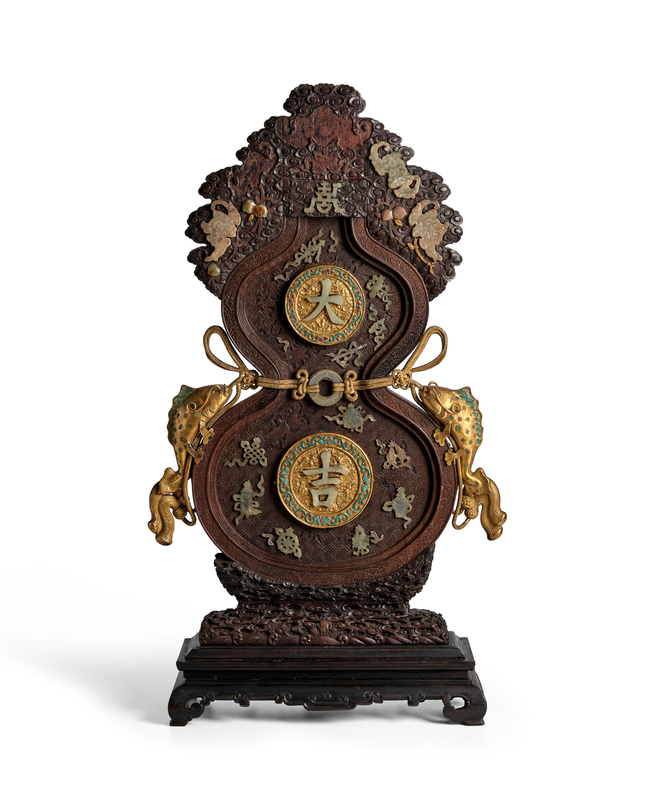
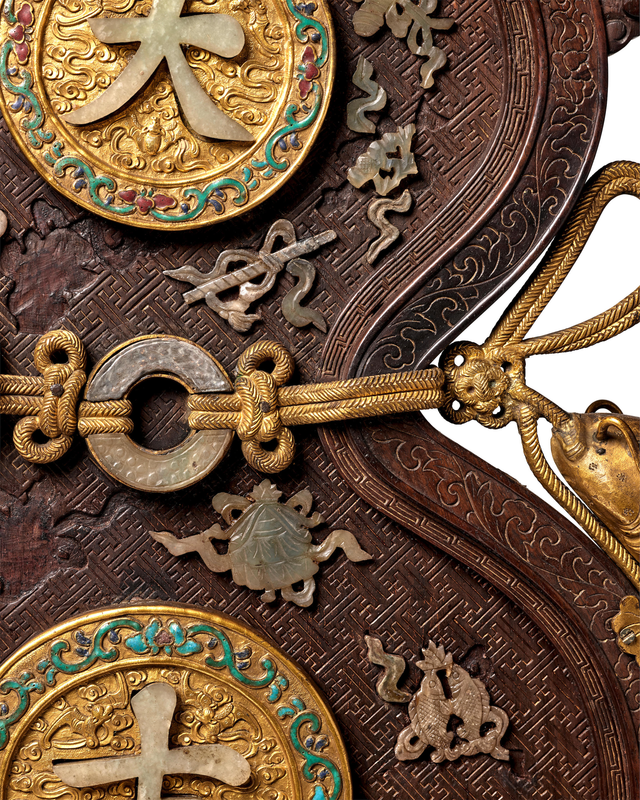


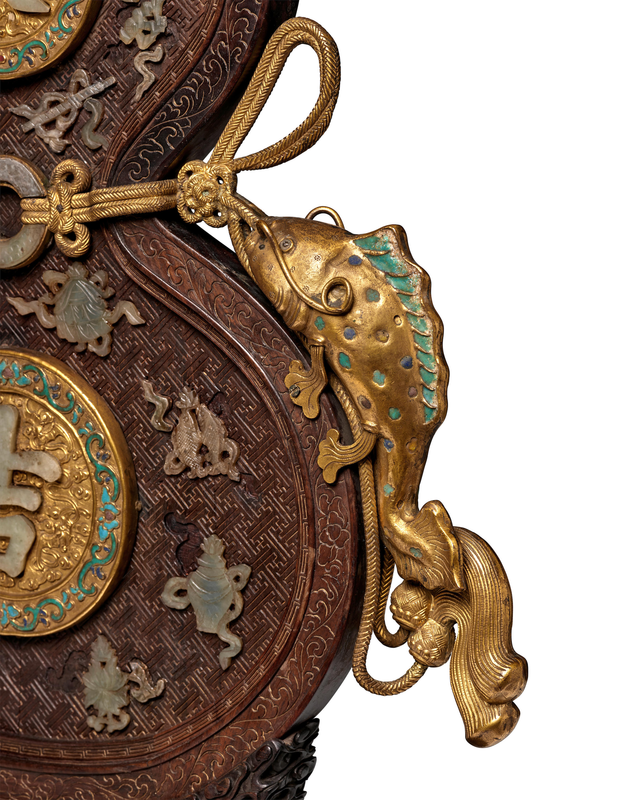

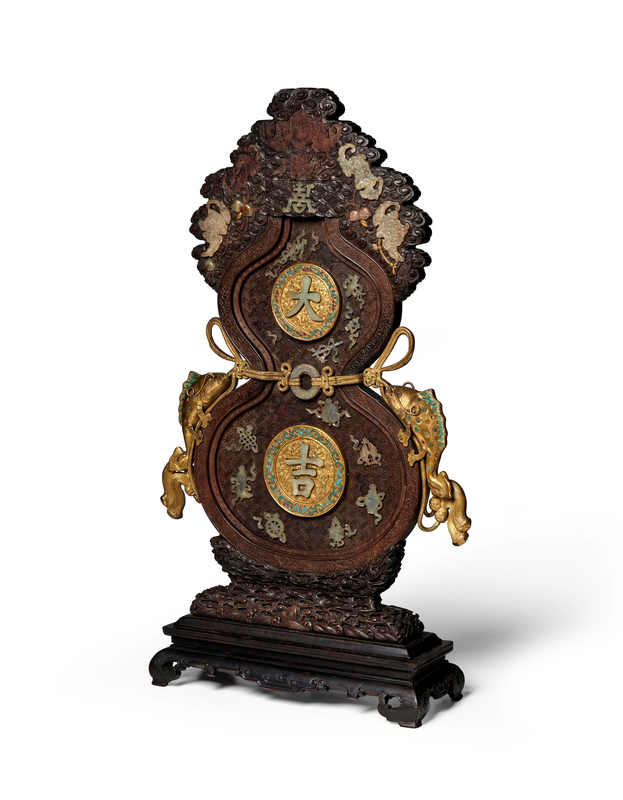







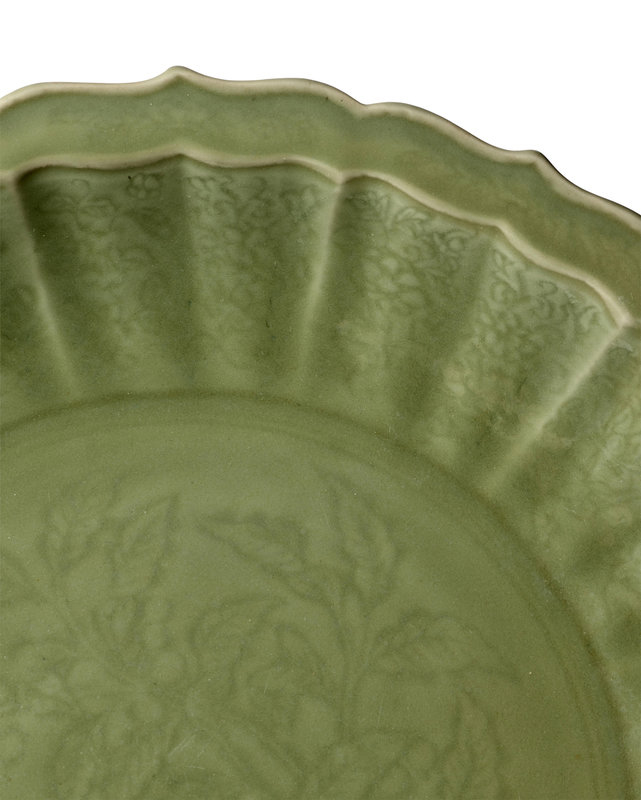
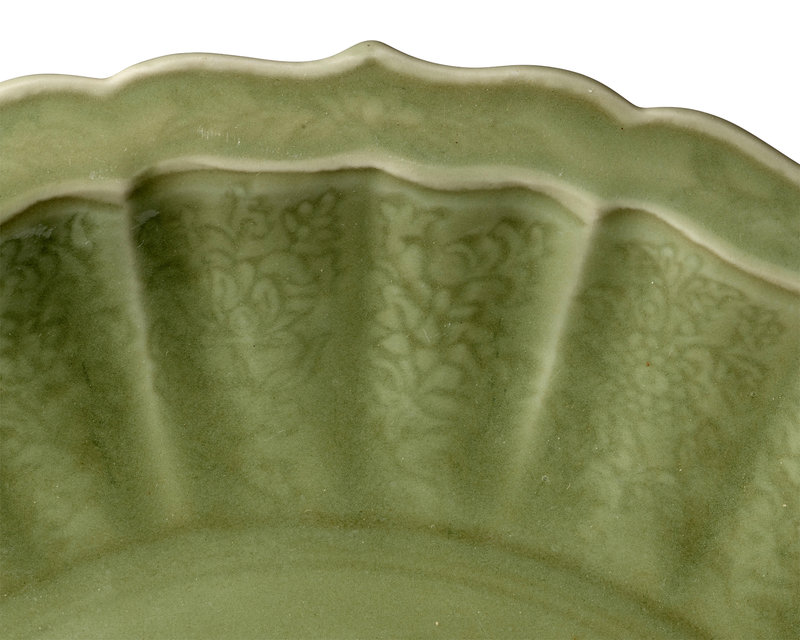




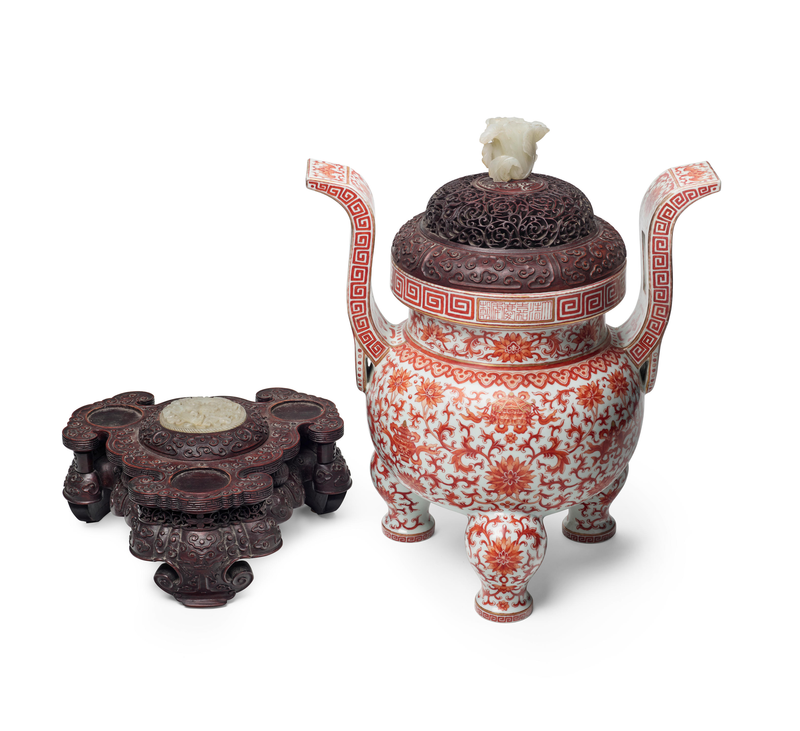
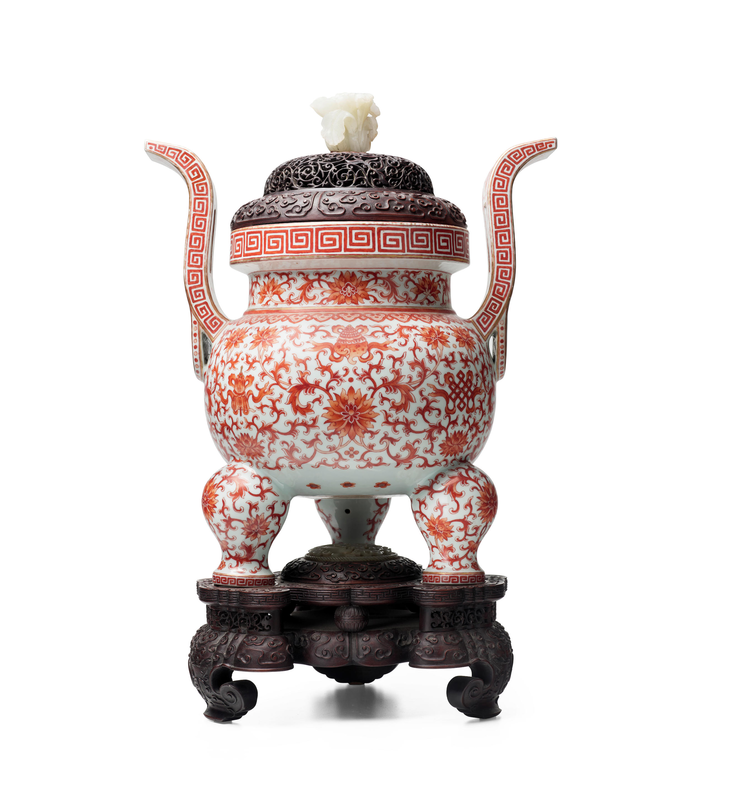
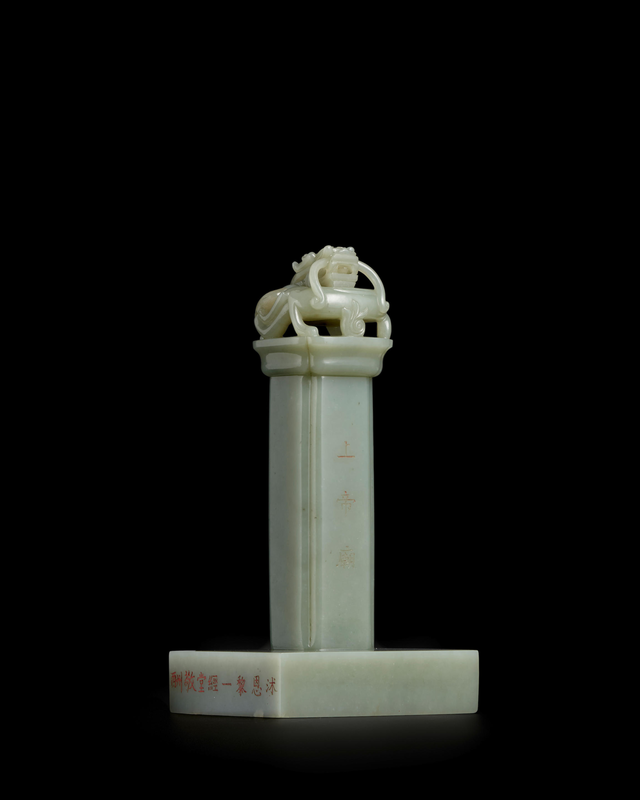
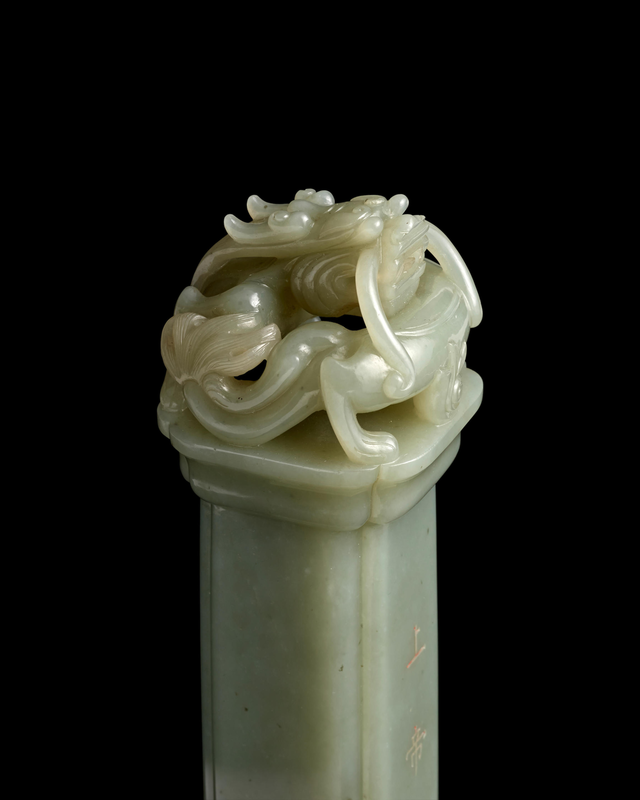

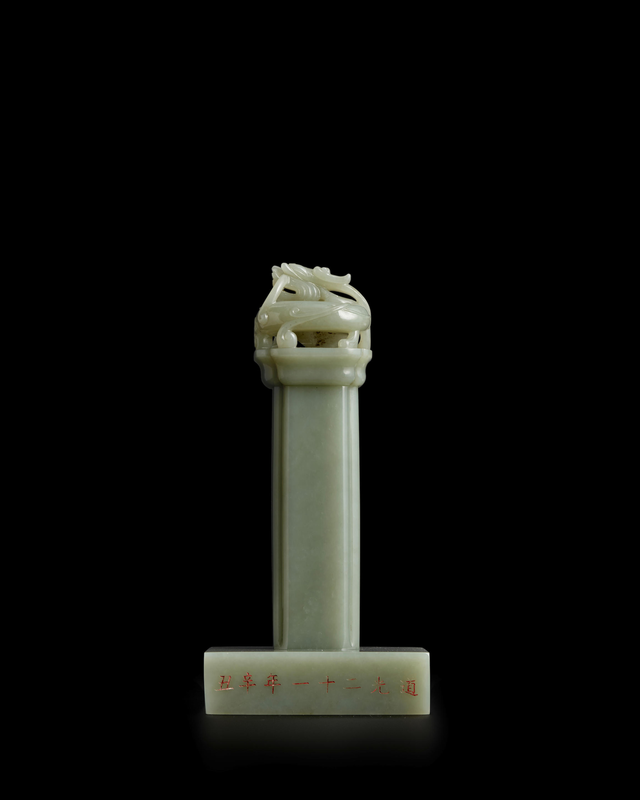
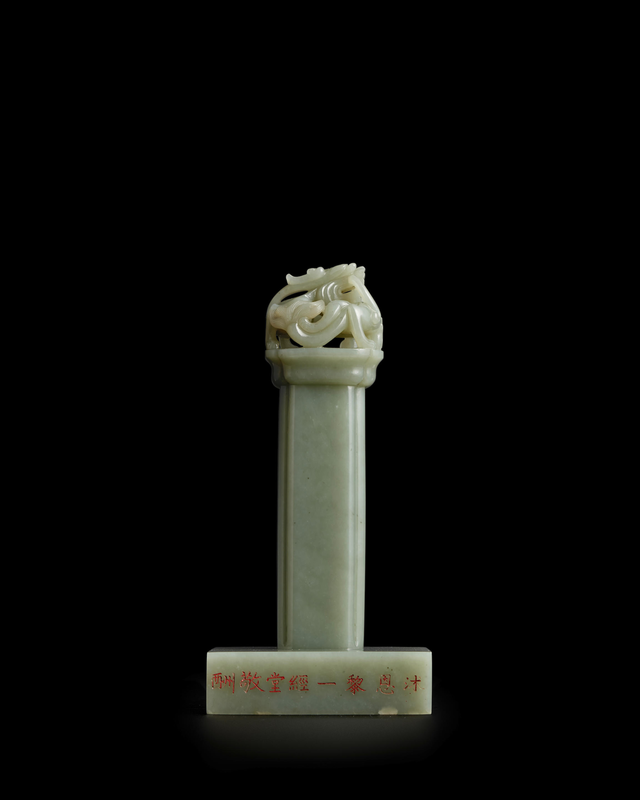

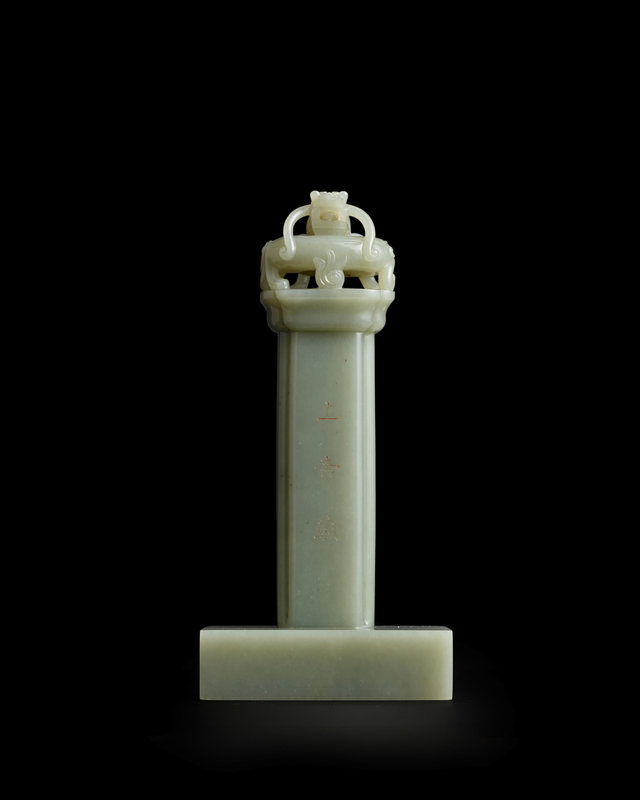






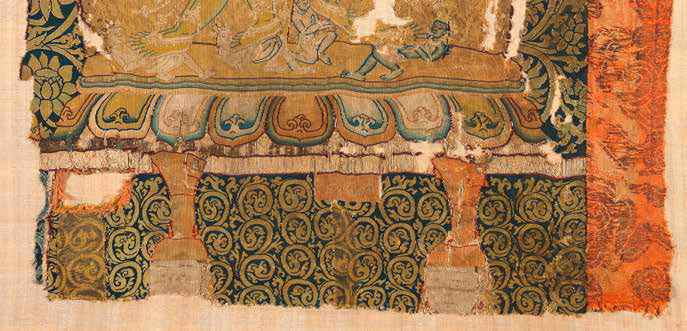




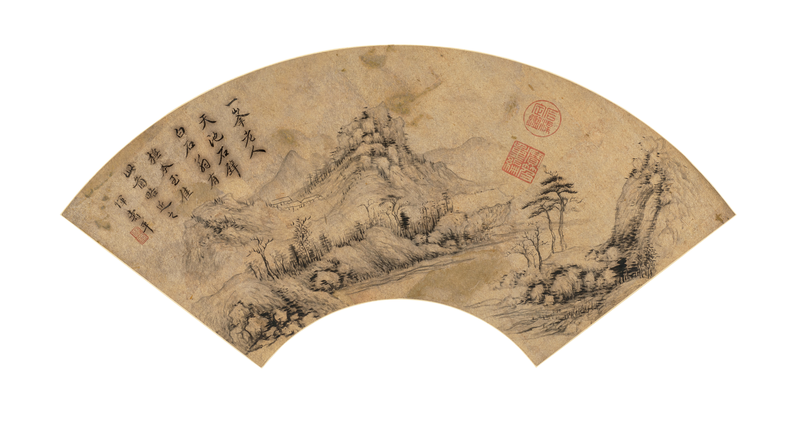

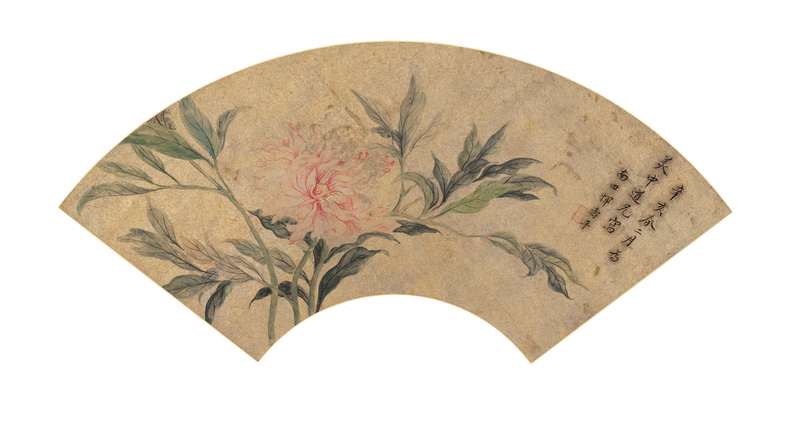
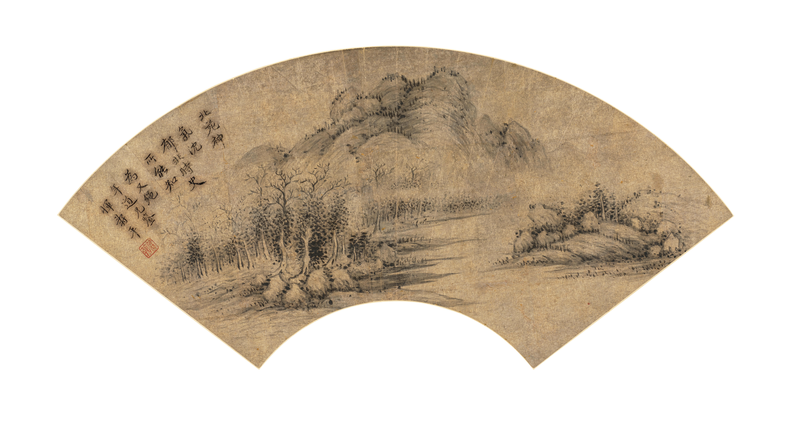

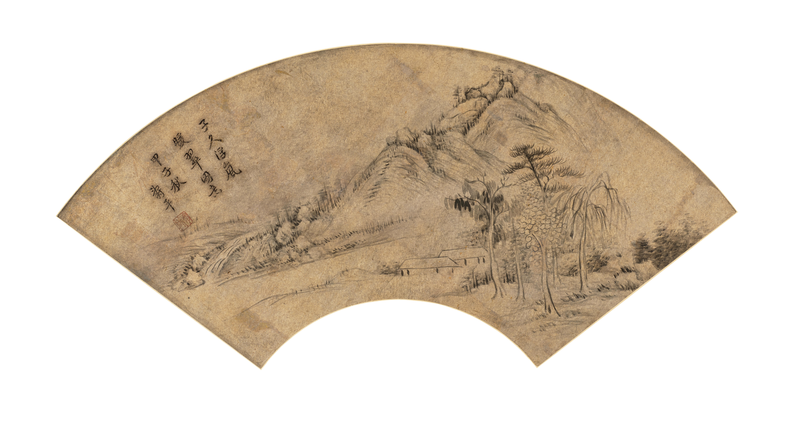
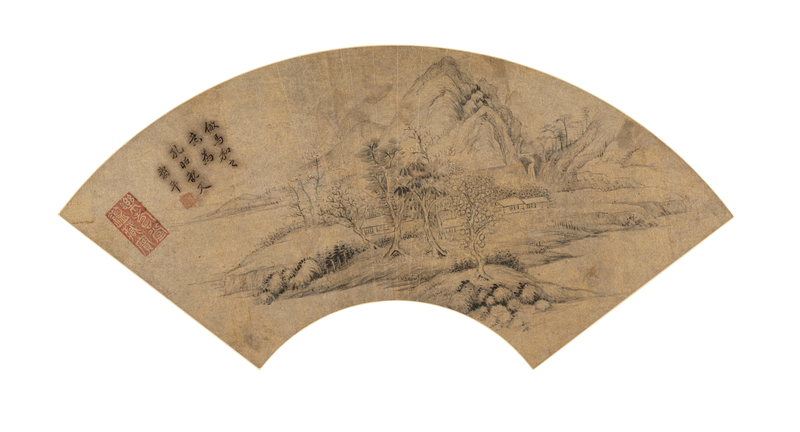

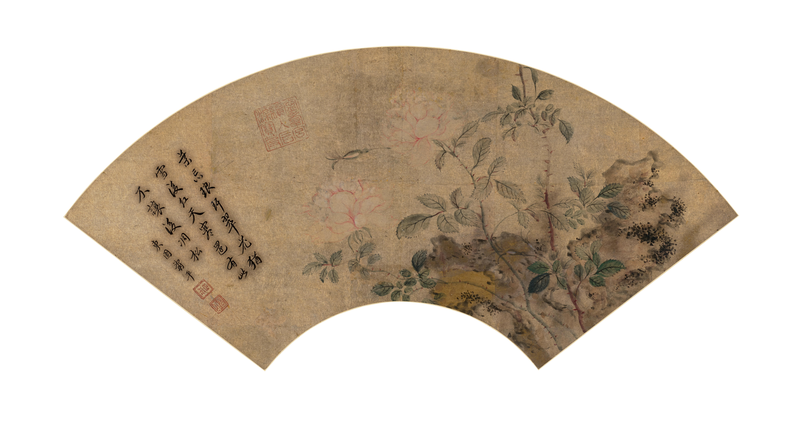










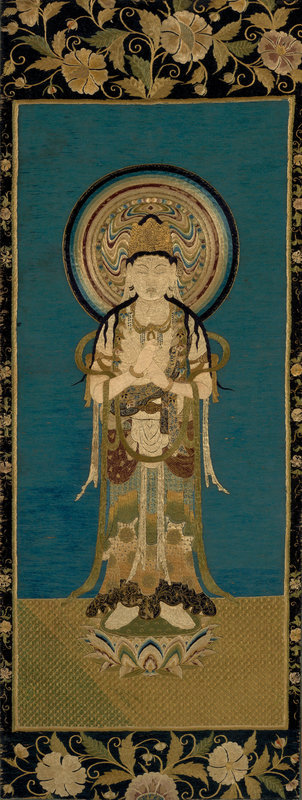




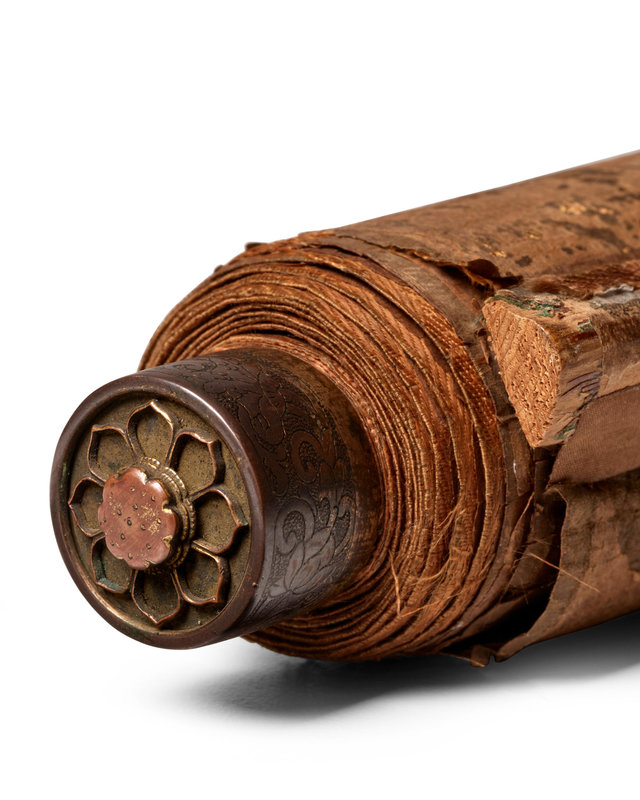




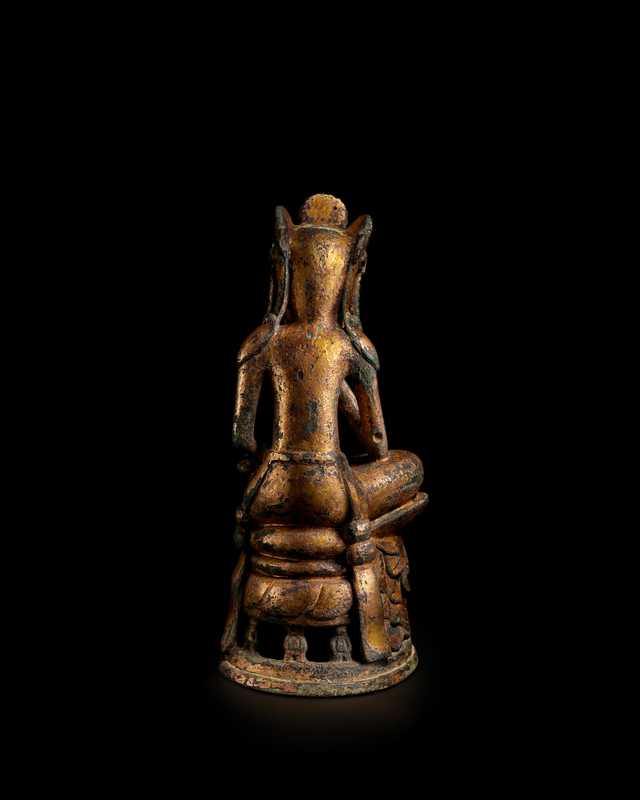



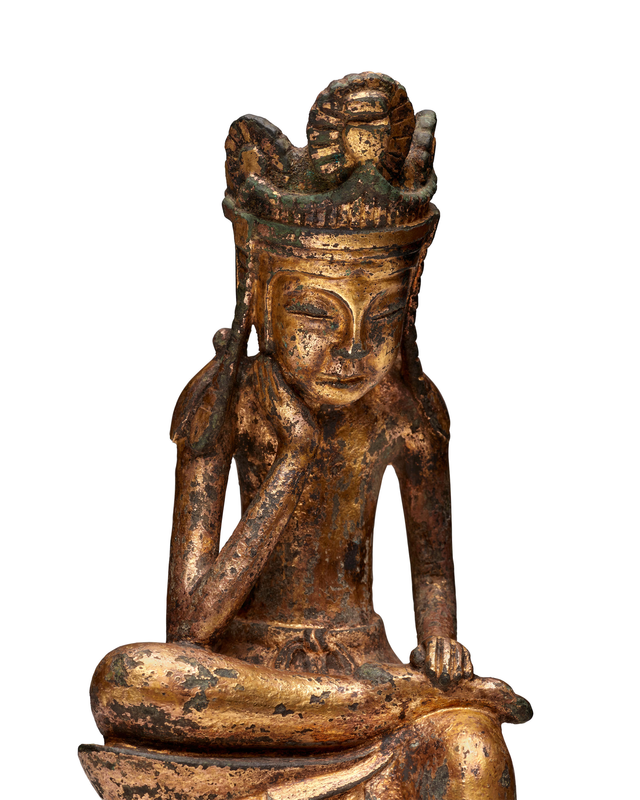
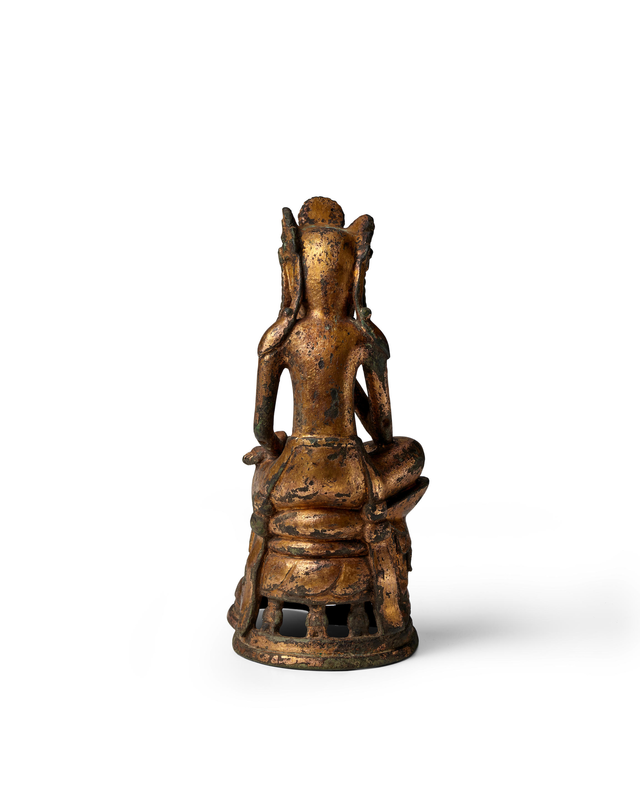



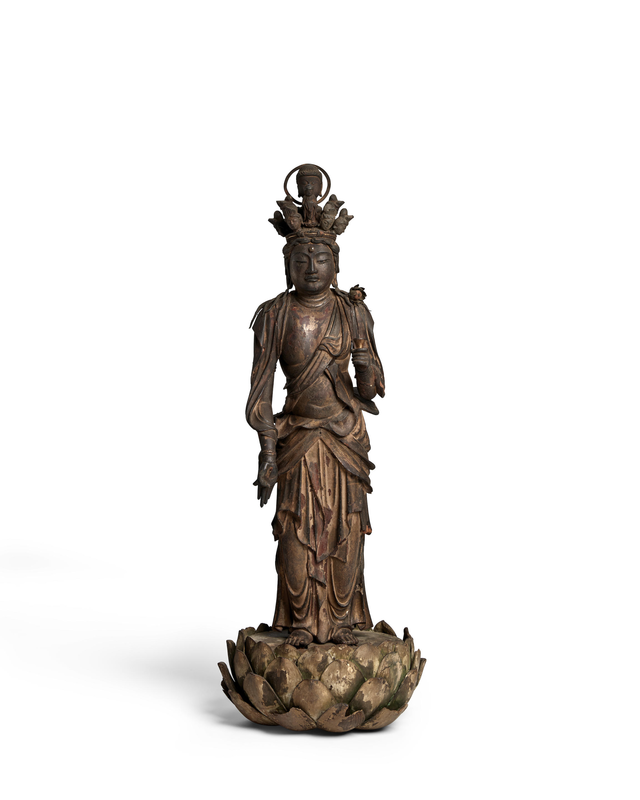


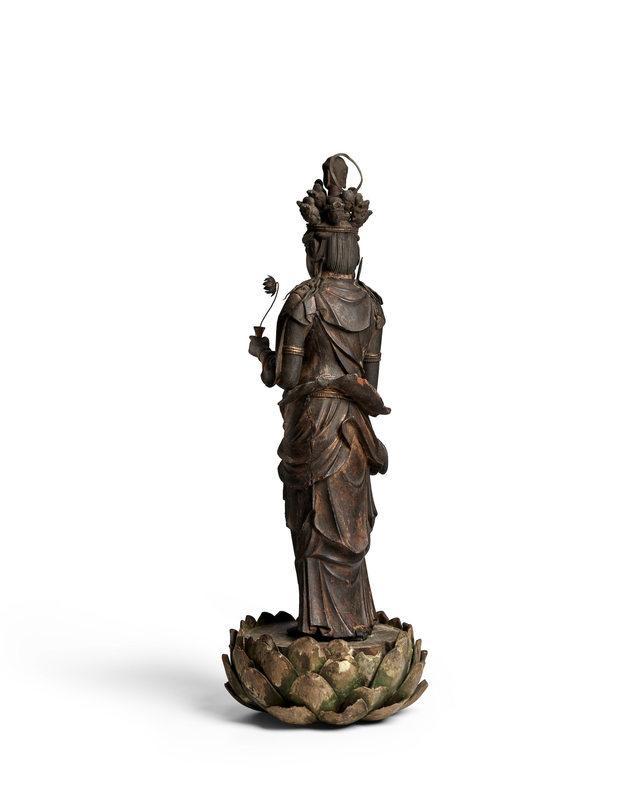



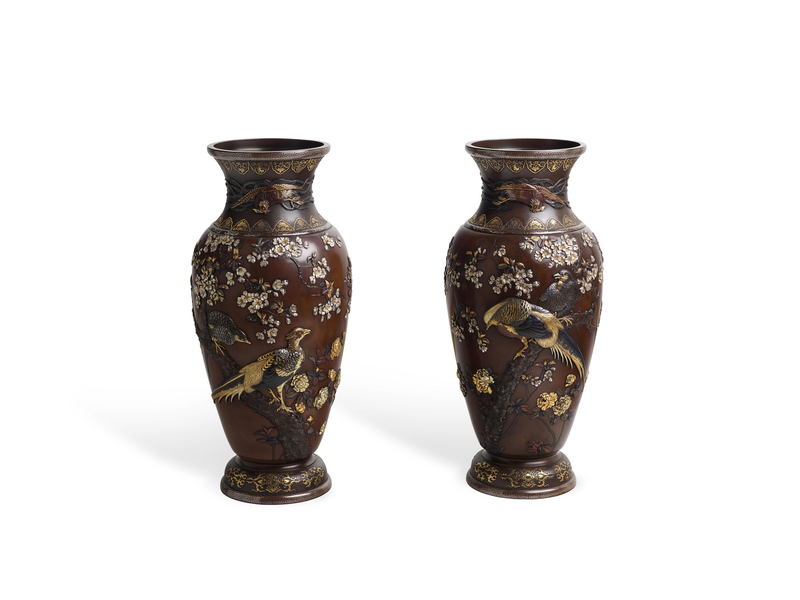

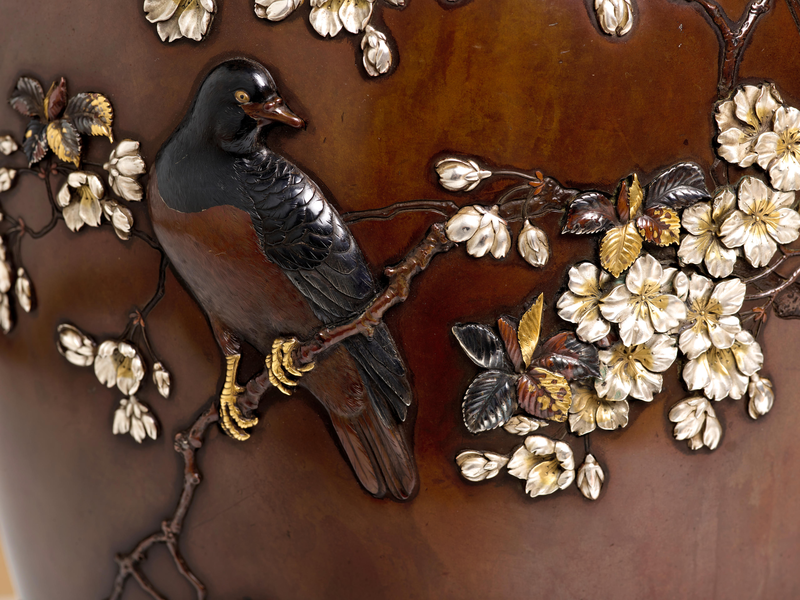
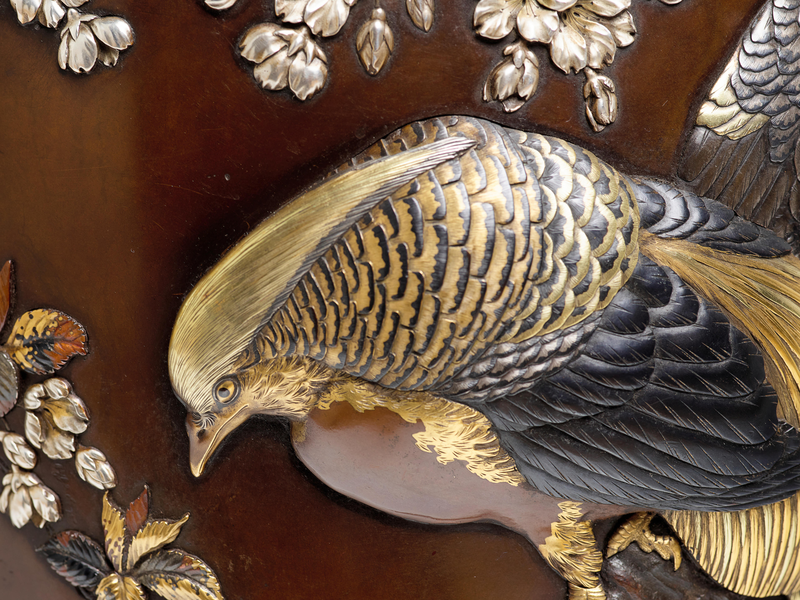

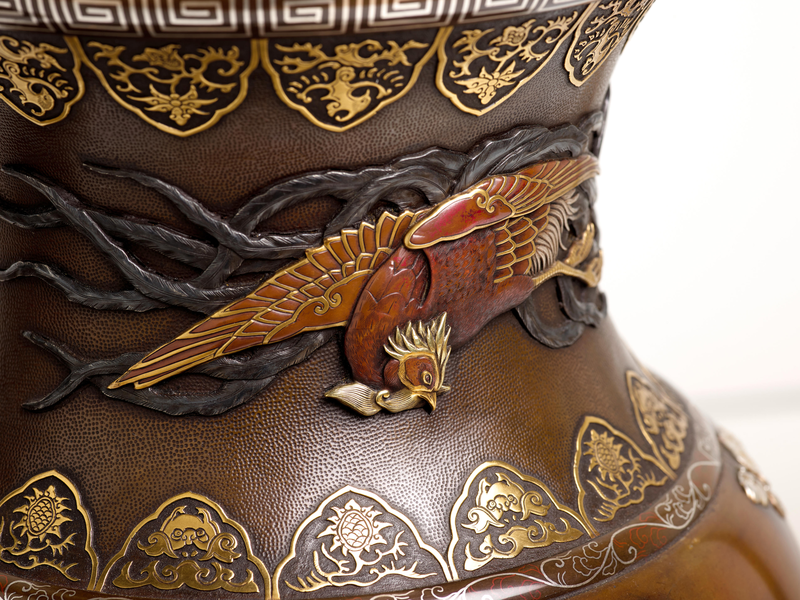

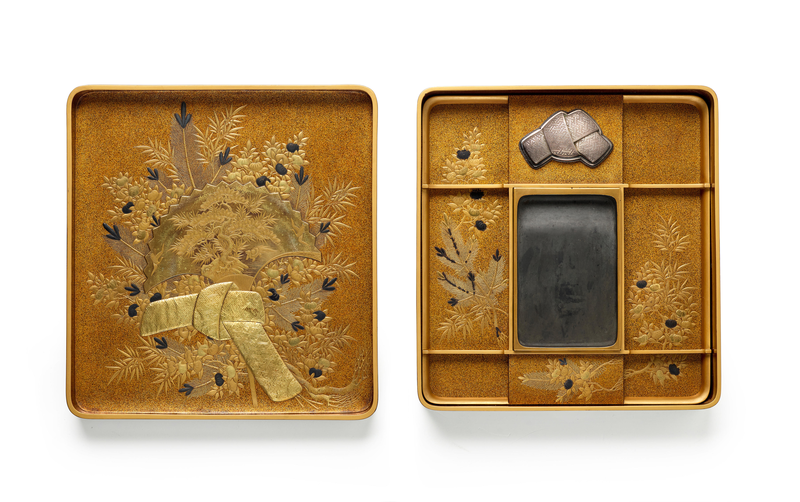
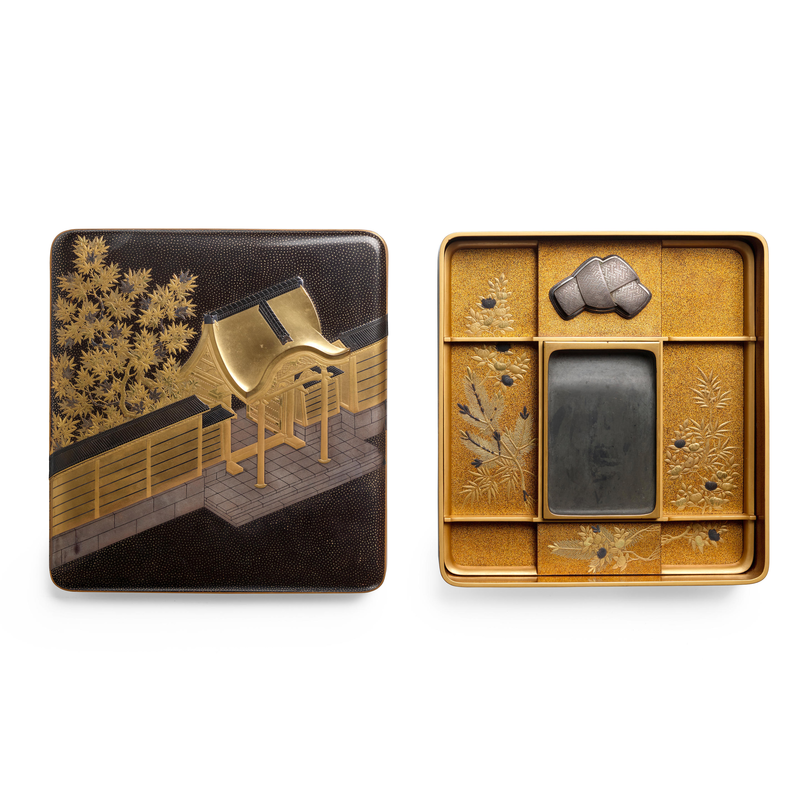



/http%3A%2F%2Fstorage.canalblog.com%2F60%2F34%2F119589%2F128961949_o.png)
/http%3A%2F%2Fstorage.canalblog.com%2F07%2F26%2F119589%2F127133936_o.jpg)
/http%3A%2F%2Fstorage.canalblog.com%2F26%2F48%2F119589%2F126810549_o.jpg)
/http%3A%2F%2Fstorage.canalblog.com%2F08%2F30%2F119589%2F126109859_o.jpg)